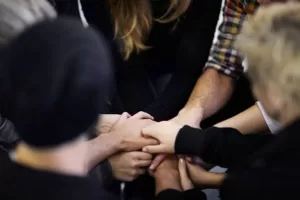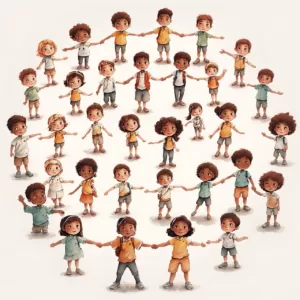Introduction
In an increasingly interconnected world, multicultural societies have become the norm rather than the exception. The tapestry of diversity, woven with threads of various cultures, religions, and ethnicities, brings both challenges and opportunities. Navigating the complex terrain of co-existence requires a nuanced understanding of the obstacles faced and proactive strategies for fostering inclusivity, dialogue, and understanding among diverse communities. This blog explores the dynamic landscape of multicultural societies, shedding light on the challenges and opportunities they present and offering insights into strategies for building bridges that promote co-existence.
Challenges of Co-Existence in Multicultural Societies

- Cultural Misunderstandings: Multicultural societies often grapple with cultural misunderstandings arising from differences in customs, traditions, and communication styles. These misunderstandings can lead to stereotypes, prejudice, and, in extreme cases, contribute to social tension.
- Religious Frictions: Religious diversity can be a source of strength, but it also poses challenges. Intolerance and lack of understanding between different religious groups can lead to conflicts, hindering the development of a harmonious co-existent society.
- Ethnic Divisions: Ethnic divisions may result in social fragmentation and the formation of isolated communities. This segregation can limit opportunities for interaction and collaboration, hindering the development of a cohesive society.
- Economic Disparities: Multicultural societies may also face economic disparities, with certain groups facing marginalisation and limited access to resources. Economic inequality can contribute to social unrest and hinder the establishment of a fair and just co-existent community.
Opportunities for Co-Existence

- Cultural Enrichment: Embracing cultural diversity provides an opportunity for mutual enrichment. Exposure to different traditions, art forms, and ways of life can broaden perspectives and contribute to a more vibrant and dynamic society.
- Interfaith Dialogue: Facilitating dialogue between different religious groups promotes understanding and tolerance. Interfaith initiatives create spaces for open conversation, dispelling misconceptions and fostering a sense of shared humanity.
- Cultural Exchange Programs: Cultural exchange programs offer a practical way to bridge divides. Educational initiatives, festivals, and events that celebrate various cultures can promote cross-cultural understanding and appreciation.
- Inclusive Policies: Implementing inclusive policies at the societal and institutional levels is crucial. These policies should address issues of discrimination, promote equal opportunities, and create an environment where diversity is valued and respected.
- Education for Diversity: Incorporating education for diversity in school curricula can play a pivotal role in shaping the attitudes of future generations. Teaching children about different cultures, religions, and ethnicities fosters a mindset of acceptance and respect. This factor will play major role for the generations to come and so far it lacks around the world. The countries should have emphasised more on this, knowing that we are now living in a global village and travelling is common due to different opportunities across the world.
Strategies for Fostering Inclusivity

- Community Engagement: Actively involving communities in decision-making processes fosters a sense of ownership and belonging. Engaging diverse groups in community initiatives promotes collaboration and breaks down barriers.
- Media Representation: Ensuring accurate and positive representation of all communities in media is essential. Media plays a powerful role in shaping perceptions, and diverse representation can challenge stereotypes and promote understanding. The most important thing about media is that it has to be free and not biased. The rise of social media and its influence will cover any loopholes of traditional media.
- Promoting Social Integration: Creating spaces for social interaction, such as community centres and public events, encourages people from different backgrounds to come together. Shared experiences build bridges and foster a sense of unity.
- Conflict Resolution Mechanisms: Developing effective conflict resolution mechanisms is crucial for addressing tensions that may arise. Mediation and dialogue platforms provide opportunities for open communication and finding common ground.
- Leadership and Role Models: Encouraging diverse leadership at all levels of society is important. Having role models from different backgrounds inspires confidence and sends a message of inclusivity. The leadership should be answerable to public and endeavour should be made to involve the public or community. The public will remain the major actor.
- Educational System: A robust educational system should be developed to groom the children. It should educate them about co-existence, ethic, religious and cultural differences. Mutual respect, sacrifice, unity and co-existence must be the motto of our future generations for better peace and prosperity.
Conclusion
To build bridges for co-existence in multicultural societies is a multifaceted challenge that demands a holistic approach. Recognising the challenges and opportunities, and implementing strategies for fostering inclusivity, dialogue, and understanding are key to creating a harmonious and thriving society. Embracing diversity as a strength rather than a source of division is the foundation upon which we can build a future where co-existence is not just a goal but a lived reality. As we navigate the complexities of our interconnected world, let us strive to bridge the gaps, celebrate our differences, and build a future where unity in diversity is not just an aspiration but a shared reality.

https://t.me/reyting_topcazino/16